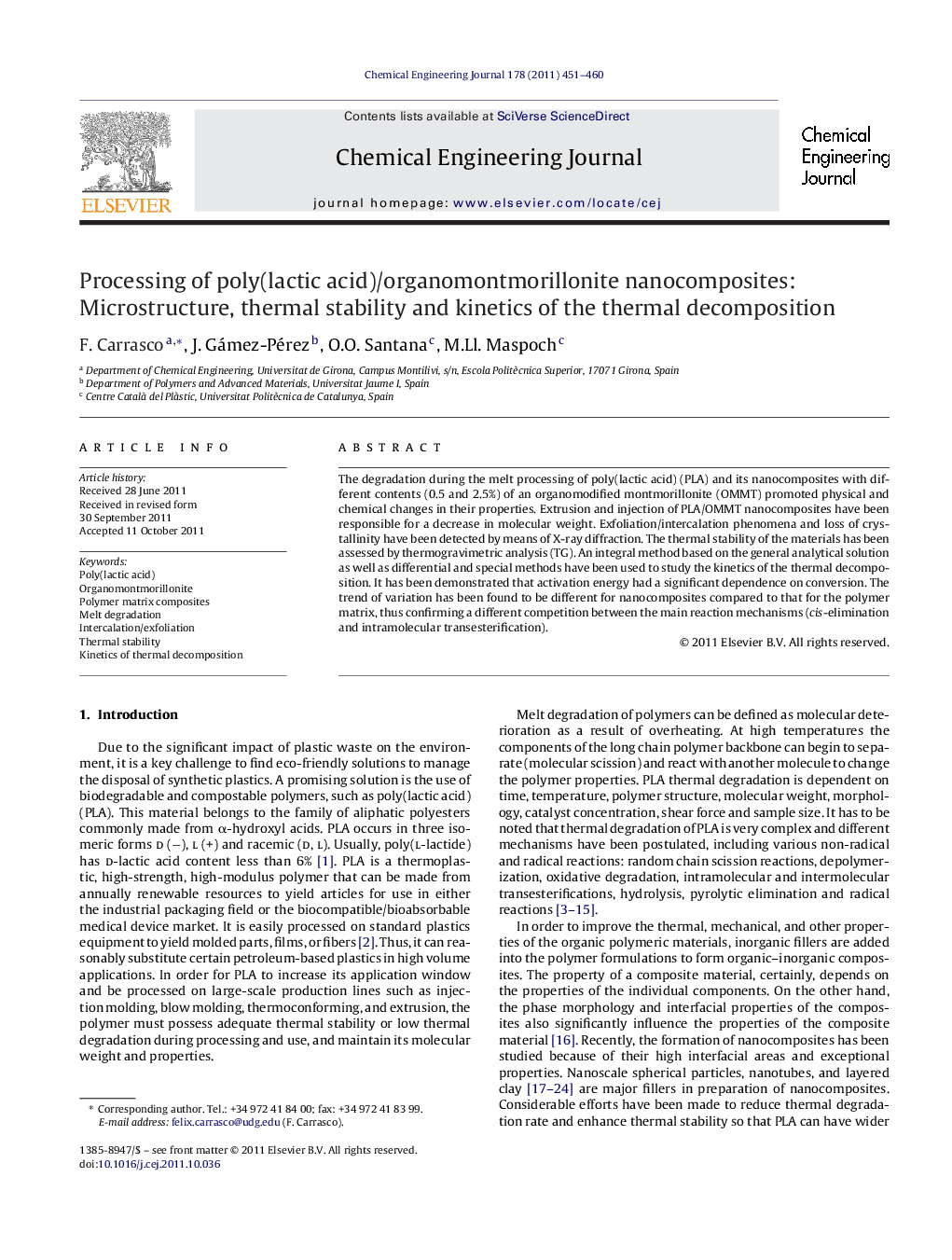| Article ID | Journal | Published Year | Pages | File Type |
|---|---|---|---|---|
| 150492 | Chemical Engineering Journal | 2011 | 10 Pages |
The degradation during the melt processing of poly(lactic acid) (PLA) and its nanocomposites with different contents (0.5 and 2.5%) of an organomodified montmorillonite (OMMT) promoted physical and chemical changes in their properties. Extrusion and injection of PLA/OMMT nanocomposites have been responsible for a decrease in molecular weight. Exfoliation/intercalation phenomena and loss of crystallinity have been detected by means of X-ray diffraction. The thermal stability of the materials has been assessed by thermogravimetric analysis (TG). An integral method based on the general analytical solution as well as differential and special methods have been used to study the kinetics of the thermal decomposition. It has been demonstrated that activation energy had a significant dependence on conversion. The trend of variation has been found to be different for nanocomposites compared to that for the polymer matrix, thus confirming a different competition between the main reaction mechanisms (cis-elimination and intramolecular transesterification).
Graphical abstractFigure optionsDownload full-size imageDownload as PowerPoint slideHighlights► Poly(lactic acid) with a nanoclay was processed by extrusion and further injection. ► Intercalation and exfoliation were examined by means of X-ray diffraction analysis. ► Nanoparticles exerted a protective effect against the thermal degradation in the melt. ► The general analytical solution enabled the quantification of the kinetic triplet. ► Activation energy changed with conversion given that reaction mechanisms also changed.
